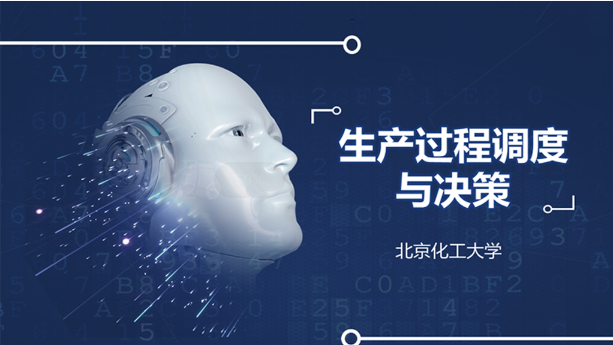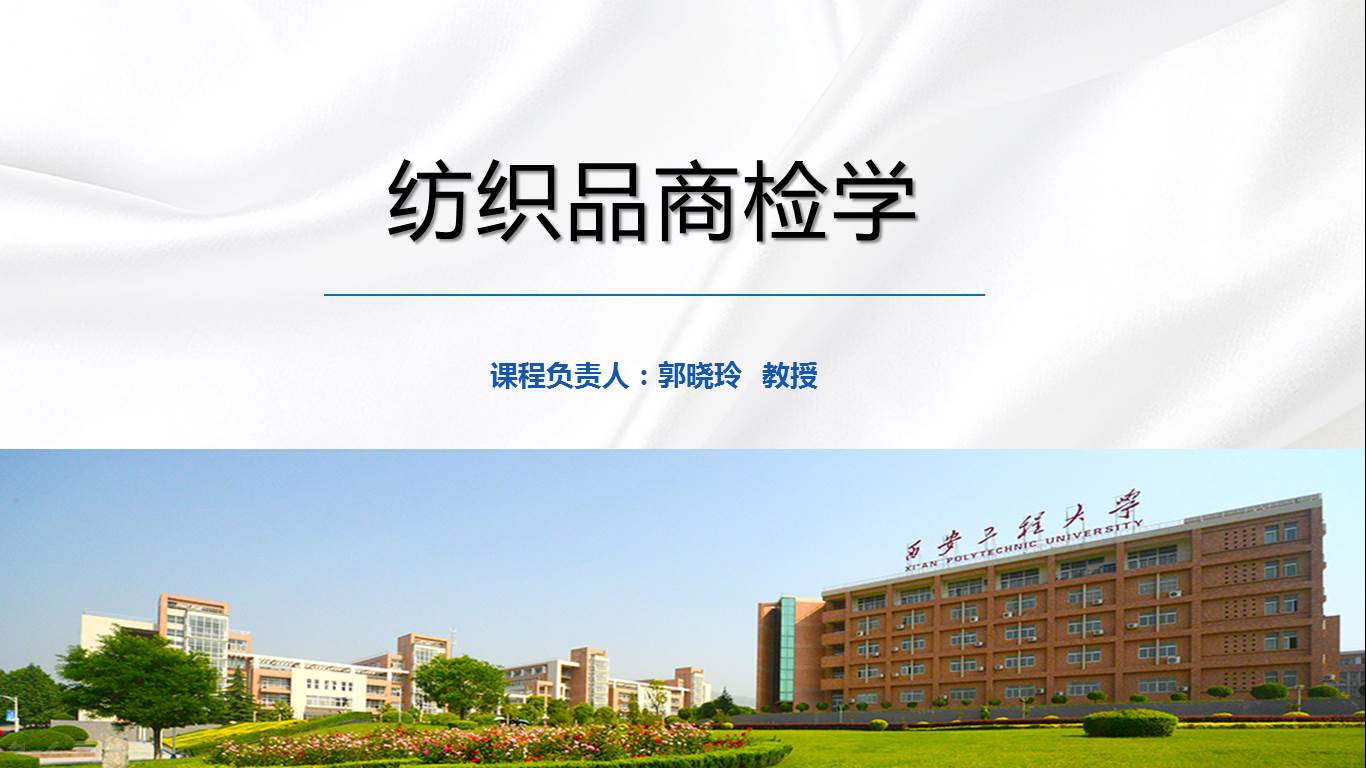
当前课程知识点:Diagnostics in Chinese Medicine > Week 2 Basic Theory of Chinese Medicine 2:Zang-Fu Theory > 2.5 Kidney > 2.5 Kidney
返回《Diagnostics in Chinese Medicine》慕课在线视频课程列表
返回《Diagnostics in Chinese Medicine》慕课在线视频列表
同学们好
我们继续学习五脏肾的生理功能和病理变化
肾 藏在腰间
所以我们把腰称之为肾之腑
肾亦为先天之本
肾 主要从两方面来学习
一个是肾的生理和病理
一个是肾的联属功能
我们首先来学习肾的生理功能和它相对应的病理变化
首先我们来看肾的生理的功能
肾最主要的功能 就是肾主藏精
主生长发育和生殖的功能
肾精 包括了先天之精和后天之精
先天之精来源于父母的生殖之精
当精卵结合 就构成了我们的先天之精
后天之精就是来源于后天的脾胃运化的水谷精微 充养了肾精
所以肾精的来源
既来源于先天 也来于后天脾胃
肾精充盈与否与人体的生 长 壮 老 死的过程密切相关
这个过程 我们来看看
《素问 上古天真论》中有这样一段话
女子以七岁为周期
男子以八岁为周期
因此 女子二七而天癸至
这个天癸就是肾精充盛的一个标志
男子二八十六岁 肾气盛 天癸至 肾精可充足
所以 女子二七 男子二八 肾精开始充盛
而女子 七七四十九 天癸绝
男子 七八五十六 天癸绝
女子十四岁 男子十六岁 是成熟的年龄
而女子四十九 男子五十六岁 是肾精进入衰退的阶段
女性十四到四十九
男性十六到五十六岁之间
这是肾精最为充盛的时期
如果肾精充盛
人的生长发育和生殖的功能就正常
当肾精不足 首先是腰府失养
就会表现出
腰膝酸软 或者是腰膝酸痛
严重时会影响小儿的生长发育
以及成年人的生殖的功能
出现阳痿 遗精 精少不育 经闭不孕等等生育的障碍
肾藏精 与生长发育和生殖机能的密切相关
但是 肾藏精 主生长发育 只对小孩子而言
成年人 肾精有促进生殖的机能
但是成年人也并不是时刻都有生殖的需要
所以肾精 它的最主要的功能体现在营养腰府上
如果要判断一个人肾精不足或者是肾精亏损
它的主要定位症状一定是以
腰膝酸软或是腰膝酸痛为主要的症状
肾精在人体内分成两个部分
一个是肾阴 一个是肾阳
肾阴 肾阳 是我们人体内的元阴元阳
又称为真阴真阳
肾阳
它可以对我们全身五脏六腑的组织器官
起着一个温煦和推动的作用
是我们人体体内阳气的根本
肾阴
它对脏腑组织器官起着一个滋润濡养的作用
是我们人体内一切阴液的根本
肾阴 肾阳是我们人体内阴和阳的根本
如果这两个虚弱的话 就会出现很严重的病变
肾阴虚会表现出 腰膝酸软 遗精
或月经稀少 头晕耳鸣
以及阴虚火旺的内热证
肾阳虚 会表现出
腰膝冷痛 性欲减退 夜尿多 肢冷气短等等
这些阳虚不能温煦的症状
肾的第二个生理功能就是肾主水的功能
肾主水 是指
肾具有主持全身水液代谢
维持体内水液平衡的作用
人体的水液代谢 主要依赖肾阳的蒸腾气化的功能
当肾阳的蒸腾气化功能正常
则开阖有度 尿液的排泄也就正常
肾阳不足 肾的气化失常
水液代谢就出现异常
会表现出尿少 水肿 或者是尿多 尿频的表现
肾主水指的是人体的水液代谢
主要依靠肾阳气化功能
我们来看看水液代谢过程
当水入胃 再到小肠和大肠
糟粕往下传的同时
水分通过脾的运化 转变成为津液
再通过肺的宣发和肃降 布散到全身
所以脾的运化失常
肺的宣发和肃降功能失常
都可以影响到津液的生成 输布和代谢
但是
肺和脾的功能
又都与肾阳的温煦有密切关联
肾阳 它是我们人体阳气的根本
所以肾阳对水液的代谢
以及对全身各个脏腑的功能
都有促进和调节的作用
当肾阳温煦功能正常时
我们全身其他
参与津液的生成输布和排泄的脏器的功能
才能维持正常
另外
尿液的生成 它主要靠肾阳的蒸腾和气化而形成的
尿液是水液代谢中最重要的一个环节
它依靠肾阳的蒸腾气化功能
如果肾阳不足
不仅肺脾等脏器的功能失常
也可以因为肾阳的蒸腾气化不足
尿液形成不足 而形成水肿
这里肾阳虚 也可以引起水肿
与脾病引起的水肿
和肺病引起的水肿是不一样的
脾病的水肿 与营养不良有关
肺病水肿 与感受外邪 肺失宣发和肃降有关
而肾的水肿通常是肾阳亏虚
不能温煦蒸腾气化水 而引起的病变
他表现出来以腰酸腿软
以及下肢水肿盛为最主要的表现
肾的第三个生理功能 就是肾主纳气
肾主纳气 是指的肾有摄纳
肺所吸入的清气的作用
使得呼吸保持一定的深度
肾精充足 肾纳气功能就能正常
呼吸就能均匀和调 有深度
当肾虚不能纳气 就会出现
呼多吸少 呼吸困难 动则气喘的症状
这种气喘 我们称为“肾不纳气”
长期的慢性气喘病人发作的时候
就会表现出这种慢性的气喘
肾的主要生理功能还是以肾藏精为主
所以 它相对应的病理变化主要也就是
以腰膝酸软或者是腰膝疼痛为主要的表现
这也是肾病的定位症状
那么肾的联属功能又是什么呢
我们还是从四个方面来进行学习
首先是 肾在志为惊恐
惊 恐 都是指的害怕
其中 惊为不知 事出突然 而受惊害怕
恐为自知 又称胆怯
惊恐均为不良精神刺激
《素问》上面讲
惊则气乱 恐则气下 也就是说
当惊恐过度的时候 会导致气机错乱
甚至肾气下陷 而出现下焦胀满 甚至二便失禁的表现
其次 肾在体合骨 主骨生髓
肾主骨生髓 主要是指的肾中的精气
具有促进机体生长发育的功能
因为髓分为骨髓 脊髓 脑髓 均为肾精化生
当肾精充足的时候
我们的脊髓 骨髓就能够充足
所以骨骼强健 髓海得养 脑发育就健全
当肾精不足 就会表现出来骨弱 小儿发育迟缓
老人容易出现骨折 髓海空虚 脑失所养
另外我们还要讲一下牙齿
牙齿也是我们骨骼的一个部分
中医称 齿为骨之余
表明齿与骨同出一源
也是由肾精充养的
所以 肾精充足 牙齿坚固
肾精不足 牙齿就容易松动和脱落
再次 肾其华在发 发为血之余
是指头发的生长和脱落
润泽与枯槁 不仅依赖肾中精气的充养
而且还依赖于血液的濡养
肾精和全身的血充足的时候
头发就容易长长 且有光泽
当精血不足 头发容易变白 而且干枯 容易脱落
最后 肾开窍于耳和二阴
耳朵的听力灵敏与否 与肾中精气的盈亏有密切关系
但肾精充足的时候 听力敏捷
肾精不足 听力减退 甚至耳鸣耳聋
二阴是指前阴(外生殖器)和后阴(肛门)
二阴主司二便
肾精充足 蒸化和固摄正常的时候
大小便就能够正常
肾气不足 蒸化无力 固摄无权
则二便失调 可见尿频 遗尿
或者是二便失禁的表现
由此我们可以
当肾功能正常的时候 腰不酸 腿不软
头发乌黑 牙齿坚固而有光泽 骨骼强健
当肾虚不足 就会出现腰膝酸软 头发花白
骨骼萎软无力 牙齿容易松动脱落
最后总结一下肾的生理功能和相对应的定位的症状
肾的主要生理功能是肾藏精
所以相对的定位症状 我们又称为肾病的必有症状
就是腰膝酸软 或者是腰膝酸痛
最后我们将五脏的定位症状概括一下
五脏的定位症状 又称为五脏的必有症状
也就是说
我们要辨证为以下肝 心 脾 肺 肾的病变的话
必须出现以下症状 我们才能够判断
比如肝 它有两组的定位症状
第一组是肝经循行的部位
比如胸胁 乳房 少腹等出现胀满疼痛
第二组就是精神情绪的异常 出现抑郁或者烦躁
心的定位症状有两个 一个是心悸 一个是失眠
脾定位症状有三组 纳少 腹胀 便溏
肺的定位症状有两个 咳嗽和气喘
肾的定位症状有两个 腰膝酸软或者是腰膝酸痛
我们知道五脏的定位症状之后
就可以很容易找到病变部位来进行治疗
比如
如果一个人在咳嗽气喘 我们应该治肺
如果听到一个人在发脾气 非常暴躁 我们应该治肝
如果有人腰酸腿软 腰膝酸痛 我们应该治肾
如果有人失眠 睡不着觉 心慌 则应该治心
如果有人胃口不好 肚子胀
而且大便总是软软的 烂烂的
这就是脾胃的病变 则应该去治脾胃
以上是五脏的生理功能和病理变化
本节课就讲到这里
-Introductory remark
--QQ groups、WeChat public account
-Introduction
--【Discussion 1】Why do you want to take this course?
-Unit test for Introduction
-1.1 Yin-yang theory
-1.2 The theory of five elements
--1.2.1 The theory of five elements
--1.2.2 Application of the theory of five elements
-Frequently Asked Questions
-Unit test for week 1
-2.0 Outline
--【Discussion 2】How to understand the holistic view centered on the Zang Fu theory?
-2.1 Liver
--【Discussion 3】Why is repose more important than vigorous exercise in recuperation for patients with
-2.2 Heart
-2.3 Spleen
-2.4 Lung
--2.4 Lung
-2.5 Kidney
-2.6 Six fu organs
-Frequently Asked Questions
-Unit test for week 2
-3.1 Qi
--3.1 Qi
-3.2 Blood
-3.3 Body fluid
-3.4 The relationship of qi, blood and body fluid
--3.4 The relationship of qi, blood and body fluid
--【Discussion 4】A discussion about the theory of qi, blood and body fluid
-Frequently Asked Questions
-Unit test for week 3
-4.0 Outline
-4.1 Six exogenous factors
--4.1.2 Nature and pathogenicity of wind and cold
--4.1.3 Nature and pathogenicity of summer heat and damp
--4.1.4 Nature and pathogenicity of dryness and fire
-4.2 Etiology of visceral impairment
--4.2 Etiology of visceral impairment
-Frequently Asked Questions
-Unit test for week 4
-5.0 Outline of inquiry
--【Discussion 5】If you were a patient, how would you describe your condition to your doctor first?
-5.1 Inquiry of Chills and fever
--5.1.1 Chills and fever(Aversion to cold with fever)
--5.1.2 Chills and fever(Chills without fever)
--5.1.3 Chills and fever(Fever without chills)
--5.1.4 Chills and fever(Alternative chills and fever)
--【Discussion 6】How to understand "if you have clinical manifestations of cold, that is exterior syndr
-5.2 Inquiry of perspiration
-Frequently Asked Questions
-Unit test for week 5
-5.3 Inquiring of pain
--【Discussion 7】How to understand "stagnation leading to pain and innourish leading to pain"?
-5.4 Inquiring of head, body, thorax and abdomen
--5.4 Inquiring of head, body, thorax and abdomen
-5.5 Inquiring of ears and eyes
--5.5 Inquiring of ears and eyes
-5.6 Inquiring of sleep
-5.7 Inquiring of food and drink, appetite and taste
--5.7 Inquiring of food and drink, appetite and taste
-5.8 Inquiring of defecation and urination
--5.8.1 Inquiring of defecation
--5.8.2 Inquiring of urination
-5.9 Inquiring of infantile and women's disease
--5.9 Inquiring of infantile and women's disease
-Unit test for week 6
-6.0 Outline of Observation
--【Discussion 8】Please use the whole body inspection (including the expression, complexion and figure)
-6.1.1 Observation of vitality
--6.1.1 Observation of vitality
-6.1.2 Observation of the color
--6.1.2.1 The content, principles of inspection of the color
--6.1.2.2 Indication of diseases by five colors
--【Discussion 9】How do you understand the normal complexion of a normal people?
-6.1.3 Observation of the appearance
--6.1.3 Observation of the appearance
-6.1.4 Observation of figure and posture
--6.1.4 Observation of figure and posture
-Unit test for week 7
-6.2.1 Observation of head and face
--6.2.1 Observation of head and face
-6.2.2 Observation of five sensory organs
--6.2.2.1Observation of five sensory organs(observation of eyes,ears,nose)
--6.2.2.2Observation of five sensory organs(observation of lips,teeth and gums,throat)
-6.2.3 Observation of body
-6.2.4 Observation of limbs
-6.2.5 Observation of two lower orifices
--6.2.5 Observation of two lower orifices
-6.2.6 Observation of skin
-6.3 Observation of excreta
-6.4 Observation of infantile fingerprints
--6.4 Observation of infantile fingerprints
-Frequently Asked Questions
-Unit test for week 8
-7.1 Outline of tongue inspection
--7.1.1 The morphology and structure of the tongue
--7.1.2 The principle of tongue examination
--7.1.3 The method and precaution of tongue examination
--7.1.4 The content of tongue examination, normal tongue
-7.2 Inspection of tongue structure
--7.2.1 Observe the color of tongue
--7.2.2 Observe the shape of tongue
--7.2.3 Observe the states of tongue
--7.2.4 Observation of sublingual vein
-7.3 Observation of tongue coating
--7.3.1 Observation of coating texture
--7.3.2 Observe the color of coating
-7.4 Clinical significance of tongue diagnosis
--7.4 Clinical significance of tongue diagnosis
--【Discussion 10】Why to observe the tongue can be used to diagnose disease?
-Unit test for week 9
-8.1 The principle of pulse examination
--8.1 The principle of pulse examination
-8.2 The regions and methods of pulse examination
--8.2 The regions and methods of pulse examination
-8.3 The elements of pulse examination and the normal pulse
--8.3 The elements of pulse examination and the normal pulse
-8.4 Characteristics and significance of pulse
--8.4.1 Superficial pulse, deep pulse, slow pulse, rapid pulse
--8.4.2 Surging pulse, thin pulse, long pulse, short pulse
--8.4.3 Feeble pulse, forceful pulse, slippery pulse, uneven
--8.4.4 Taut pulse, tense pulse,soggy pulse, moderate pulse
--8.4.5 Knotted, slow-regular-intermittent, irregularly abrupt
-8.5 Similar pulse, concurrent pulse, pulse indicating deterioration of visceral qi۞
--8.5 Similar pulse, concurrent pulse, pulse indicating deterioration of visceral qi۞
--【Discussion 11】Why is complex pulse more common than single-factor pulse?
-8.6 Women’s pulse, children’s pulse
--8.6 Women’s pulse, children’s pulse
-8.7 The clinical significance of pulse diagnosis
--8.7 The clinical significance of pulse diagnosis
-Unit test for week 10
-9.1 Listening
-9.2.1 Abnormal sound
-9.2.2 Abnormal language
-9.2.3 Respiratory abnormality
--9.2.3 Respiratory abnormality
-9.2.4 Cough
--【Discussion 12】How to observe the patient's cough sound and sputum changes to determine whether the
-9.2.5 Abnormal sounds of the stomach and intestines
--9.2.5 Abnormal sounds of the stomach and intestines
-9.3 Smelling
--【Discussion 13】How to diagnose by smelling?
-Unit test for week 11
-10.1 The method, meaning and precautions of palpation
--10.1 The method, meaning and precautions of palpation
-10.2 Contents of palpation
--10.2.1 Palpating chest and hypochondrium
--10.2.2 Palpating stomach and abdomen
--10.2.4 Palpating hands and feet, palpating acupoints
--【Discussion 14】How to determine whether external or internal injuries?
-Unit test for week 12
-Conclusion
-Final Exam
--Final Exam


